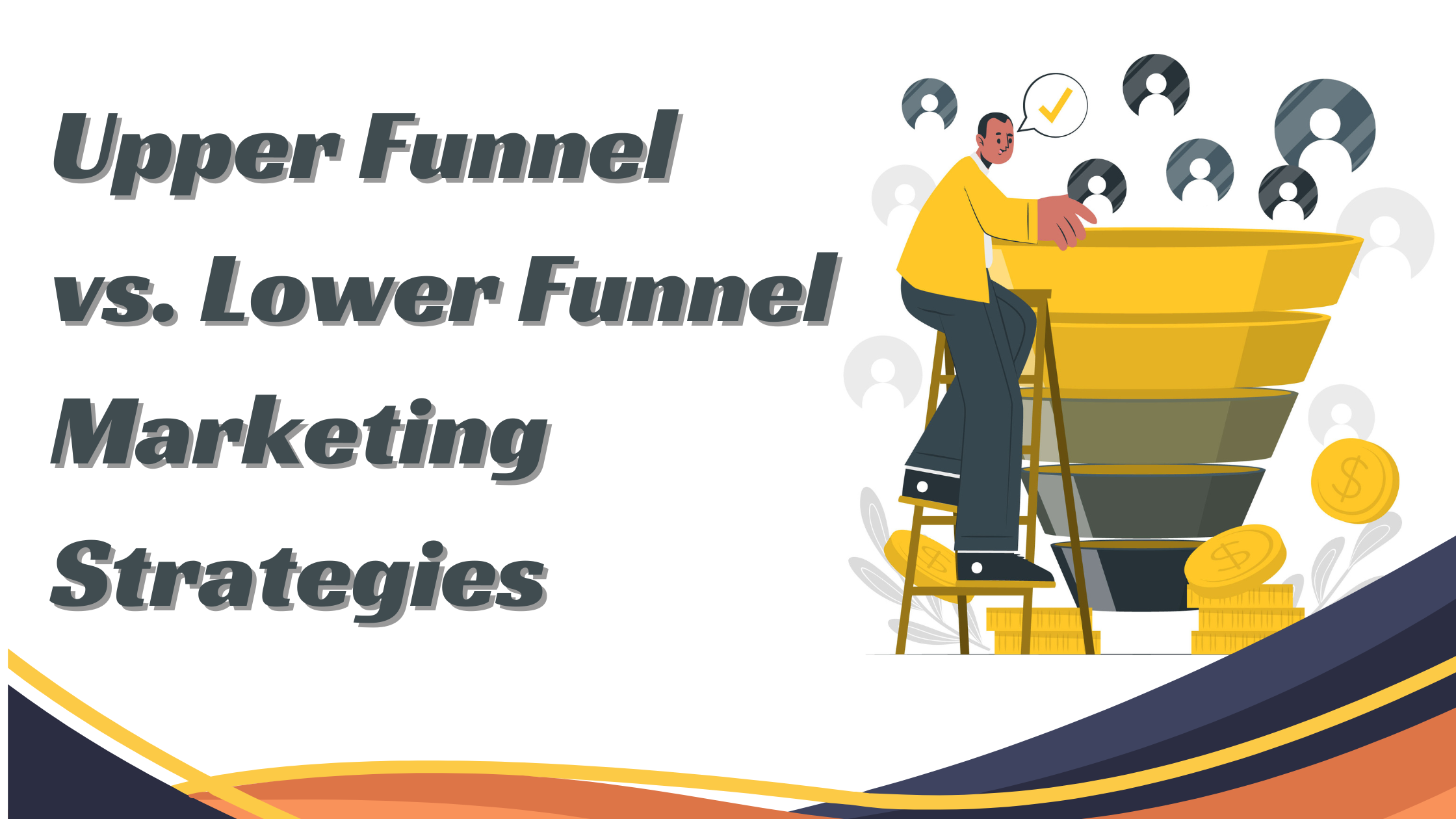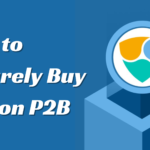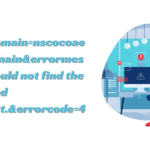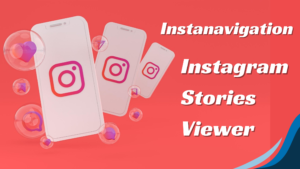Comparing Upper Funnel vs. Lower Funnel Marketing Strategies
Advertisers are often tasked with determining the most effective strategies to engage their target audiences in the ever-evolving digital marketing landscape. This process involves understanding the marketing funnel, which delineates potential customers’ journey from awareness to conversion. Two primary components of this funnel are the upper and lower, each playing a crucial role in shaping consumer behavior. This article will delve into the differences between upper funnel vs lower funnel marketing strategies, examining how they contribute to connected TV advertising and other digital advertising formats.
Understanding the Marketing Funnel
The marketing funnel is a visual representation of the customer journey, divided into stages that a consumer passes through before making a purchase decision. These stages are often grouped into three main parts: the upper funnel, middle funnel, and lower funnel. This discussion will focus on the upper and lower funnel stages.
Upper Funnel Marketing

The upper funnel, also known as the awareness stage, is the broadest part of the marketing funnel. It encompasses strategies to reach a wide audience to generate awareness and interest in a brand or product. This stage is crucial for building brand recognition and attracting potential customers who may not yet be familiar with your offerings.
Key Characteristics of Upper Funnel Marketing:
- Broad Audience Targeting: Upper funnel strategies cast a wide net to reach a diverse audience. The goal is to capture the attention of as many potential customers as possible.
- Brand Awareness: At this stage, the focus is on increasing brand visibility and recognition. Techniques such as display ads, video ads, and social media campaigns are commonly used.
- Engagement and Education: Upper funnel marketing educates and engages potential customers about the brand’s values, products, and services.
- Emphasis on Content: Content marketing plays a significant role, with strategies involving blog posts, informative videos, and infographics to engage and inform audiences.
Lower Funnel Marketing
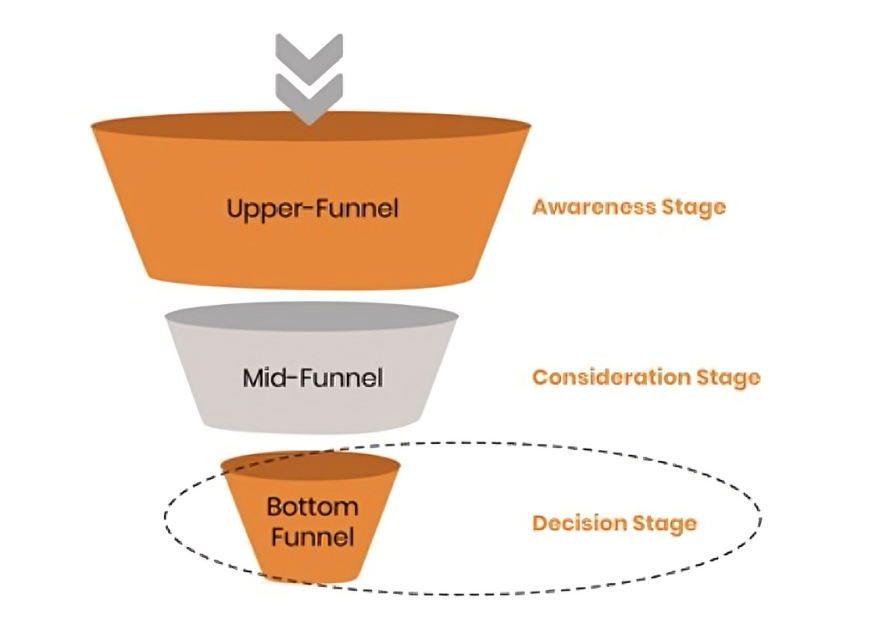
The lower funnel, the conversion stage, is where potential customers are closer to purchasing. Strategies in this stage are designed to convert leads into customers by addressing specific needs and encouraging action.
Key Characteristics of Lower Funnel Marketing:
- Narrow Audience Targeting: Lower funnel strategies focus on a more targeted audience, often those who have already shown interest or engaged with the brand.
- Conversion-Focused Messaging: The messaging at this stage is tailored to highlight the benefits and features of the product or service, addressing any objections or concerns.
- Direct Calls to Action: Lower funnel marketing includes clear calls to action (CTAs) encouraging potential customers to take specific actions, such as signing up for a trial, purchasing, or contacting sales.
- Utilization of Data: Data-driven insights are critical in lower funnel strategies to understand customer behavior and preferences, allowing for personalized marketing efforts.
Upper Funnel vs. Lower Funnel: Key Differences
Understanding the differences between upper funnel vs. lower funnel marketing strategies is essential for advertisers to create a comprehensive marketing plan. Here are some key distinctions:
Objectives
- Upper Funnel: The primary objective is to build brand awareness and capture the attention of a broad audience. This stage concerns creating a lasting impression and establishing a brand presence.
- Lower Funnel: The focus shifts to conversion, to turn leads into paying customers. This stage involves persuading potential customers to take action and make a purchase.
Metrics of Success
- Upper Funnel: Success is measured through reach, impressions, and engagement rates. Brand sentiment and awareness levels are also important indicators.
- Lower Funnel: Metrics include conversion rates, click-through rates (CTR), return on investment (ROI), and customer acquisition cost (CAC). These metrics indicate the effectiveness of conversion strategies.
Messaging
- Upper Funnel: Messaging is broader and focused on storytelling, brand values, and benefits. It aims to evoke emotions and create a connection with the audience.
- Lower Funnel: Messaging is more specific and direct, highlighting product features, benefits, and solutions to potential customers’ pain points.
Channels and Tactics
- Upper Funnel: Common channels include social media, display advertising, video content, and content marketing. Connected TV advertising and OTT advertising are also effective in reaching broad audiences.
- Lower Funnel: Channels such as cold email marketing, retargeting ads, and search engine marketing (SEM) are utilized to engage potential customers closer to purchasing.
The Role of Connected TV Advertising
Connected TV advertising has emerged as a powerful tool for both upper-funnel and lower-funnel marketing strategies. As more consumers shift from traditional TV to digital platforms, advertisers leverage connected TV and OTT advertising to reach audiences effectively.
Connected TV in Upper Funnel Marketing
- Expansive Reach: Connected TV advertising allows brands to reach a broad and diverse audience, making it ideal for upper-funnel strategies focused on brand awareness.
- Engaging Content: With the ability to deliver high-quality video content, connected TV offers an immersive experience that captures viewers’ attention and builds brand recognition.
- Programmatic Advertising: Programmatic advertising in connected TV allows for automated ad buying, enabling advertisers to optimize their campaigns in real-time and reach the right audience segments.
Connected TV in Lower Funnel Marketing
- Targeted Messaging: Connected TV advertising provides advanced targeting capabilities, allowing advertisers to deliver personalized messages to audiences who have already shown interest in the brand.
- Performance Marketing: Lower funnel strategies can benefit from connected TV’s ability to track and measure performance metrics, helping advertisers optimize their campaigns for conversions.
- Demand Generation: Connected TV advertising can drive demand generation by encouraging viewers to take action, such as visiting a website or purchasing.
Crafting a Balanced Marketing Strategy
Advertisers should craft a balanced marketing strategy incorporating upper- and lower-funnel tactics to achieve optimal results. Here are some tips for creating an effective strategy:
Integrate Channels
- Holistic Approach: Integrate various channels, including connected TV, social media, email, and search, to create a cohesive and seamless customer journey.
- Consistent Messaging: Ensure that messaging across all channels aligns with the brand’s values and objectives.
Leverage Data and Insights
- Data-Driven Decisions: Utilize data analytics to gain insights into customer behavior and preferences. This information can guide both upper and lower-funnel strategies.
- Personalization: Leverage customer data to deliver personalized experiences that resonate with the target audience and drive conversions.
Test and Optimize
- A/B Testing: Continuously test different strategies, creatives, and messaging to identify the best for your audience.
- Optimization: Use data to optimize campaigns in real-time, making adjustments as needed to maximize performance and ROI.
Conclusion
In conclusion, understanding the differences between upper-funnel and lower-funnel marketing strategies is crucial for advertisers seeking to create effective campaigns. While the upper funnel focuses on building brand awareness and reaching a broad audience, the lower funnel emphasizes conversion and targeting potential customers ready to purchase. By leveraging connected TV advertising and integrating data-driven insights, advertisers can craft a balanced marketing strategy that maximizes results and drives business growth.

